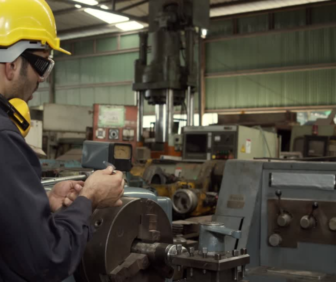In just about![]() any discussion on college access, someone will at some point mention the skilled trades. “Let’s not forget about the skilled trades,” they’ll say. “There’s such demand, and you can make six figures as a welder or electrician!”
any discussion on college access, someone will at some point mention the skilled trades. “Let’s not forget about the skilled trades,” they’ll say. “There’s such demand, and you can make six figures as a welder or electrician!”
Because of the prevalence of this idea – both that there are a lot of employment opportunities in the skilled trades that pay a really high wage, and that more high school graduates should fill these posts rather than pursue a four-year college degree – it’s worth exploring the data on the skilled trades.
The short version is that yes, there are some good jobs to be had in the skilled trades; no, you’re unlikely to earn six figures in these jobs; the road to the skilled trades isn’t exactly easy; and when all is said and done, our approach to college access should look the same for all students.
First, yes, there are jobs available in the skilled trades. A report from Michigan’s Department of Technology, Management, and Budget estimates jobs in industrial and construction trades make up close to 5% of all jobs in Michigan.
But, the number employed in many of these jobs is declining nationally. Since 2006, we employ 30% fewer carpenters, 26% fewer millwrights, and 24% fewer sheet metal workers, for example. Many still project increased openings in the skilled trades in coming years as older workers retire, but these occupations clearly aren’t the fastest growing sector of the economy either.
So yes, there are jobs available in the skilled trades, but not as many as people think.
And in these jobs, you’re not likely to earn six figure salaries. A couple of weeks ago, NPR’s 1A ran a program titled “How to Earn Six Figures Without a Four-Year Degree,” which focused largely on the skilled trades and apprenticeship pathways. The panelists referenced different occupations in the skilled trades (welders, machinists, carpenters, plumbers), and anecdotes about high salaries in the skilled trades, but largely left hard data out of the discussion.
And while there are some skilled trades occupations in which you can earn a good living (based on our analysis of Department of Labor data, electricians and plumbers earn a median over $50,000, and the top 10% of earners can indeed earn over $90,000), the median income for most jobs in the skilled trades hovers between $35,000 and $45,000 (reference the BLS occupational handbook for data on individual jobs). So while these jobs might put you over the national median of roughly $37,000, and would certainly help you earn more than most individuals with no education beyond high school, it’s unclear where this idea of welders earning six-figure incomes came from (BLS has the median welder at $39,390).
Pathways to skilled trades apprenticeship programs are also not necessarily easy to enter or complete. According to a 2016 DTMB report on registered apprenticeships in Michigan, 94% of entering apprentices between 2008 and 2015 were men, 70% were white, and 65% were members of a union – clearly not universally accessible. In addition, just roughly a third of individuals that start apprenticeships in Michigan actually complete them.
Finally, even if there were more skilled trades jobs available, and even if salaries were a bit higher, and even if the pathways to these jobs were plentiful and secure, it still shouldn’t change our approach to college advising for all students.
Students should be exposed to a range of potential careers and postsecondary pathways, and this can absolutely include careers in the skilled trades. But this means that they should also be exposed to data on the labor market outcomes for various postsecondary pathways. And presented with this data, it becomes pretty clear that our focus should be on providing every student the opportunity to attain a four-year college degree, should they want to. Those with a bachelor’s degree are more likely to be working than those without and on average earn more, and these trends seem to only be accelerating. The vast majority of jobs added to the economy since the recession have gone to BA holders, as have nearly all new jobs that pay over $50,000. And through the recession, employment largely held stable for BA holders, while construction and manufacturing saw huge job losses that have yet to recover.
The danger in discussions around the skilled trades or other pathways short of a bachelor’s degree is that they’re often reserved only for students who may not be thought of as “college material.” But based on the overwhelming evidence of the benefits that come with attaining a four-year degree – and the evidence that academically “marginal” students can and do thrive at four-year colleges – no one but the student themselves should deciding who is or isn’t college material.
So yes of course we can and should expose students to a full suite of postsecondary options. But we need to avoid anecdotes and arm them with the hard data to help all students decide what’s best for them.







